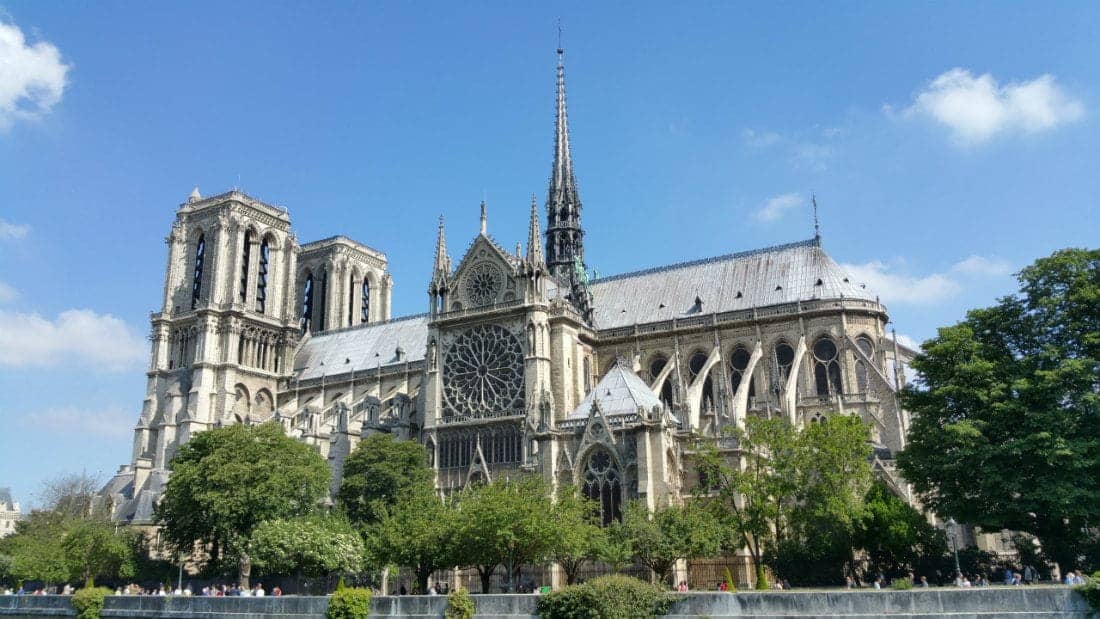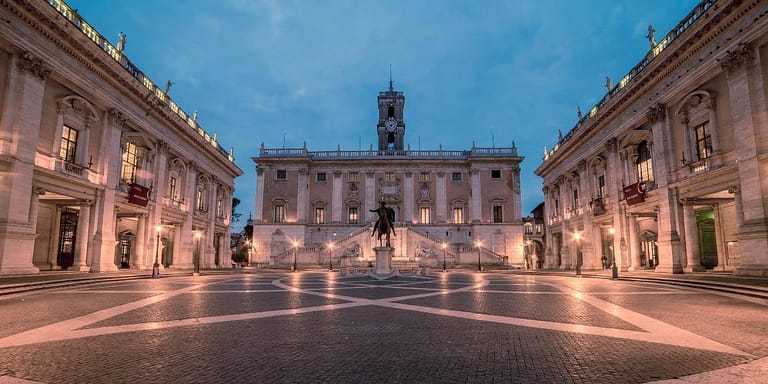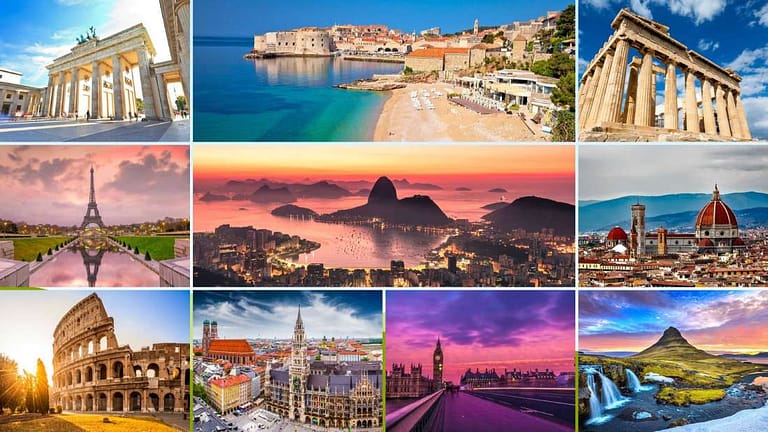Why is cultural preservation important yet overlooked?
The 2019 fire of the Notre Dame Cathedral in Paris was a huge blow to our collective mindsets. The world watched in horror as a massive fire engulfed the 800+ years of history, reducing it to rubble. When it was done, we were left with many important questions, including why cultural preservation is so important yet often overlooked by governments worldwide.
There was an outpouring of monetary support pledged by French billionaires, companies and ordinary citizens, raising close to €900 billion over two days. But, while many wept and mourned, others were pointing out all the other issues they felt were more important than an old church burning down. Why rebuild an old cathedral when there are so many other causes needing our attention and help?

Affiliate Disclosure – This post contains affiliate links. If you make a purchase through these links, I may earn a commission. This doesn’t affect your purchases or any fees you may pay for the product or service. Read more in my DISCLAIMER.
Despite how you felt about the fire, the incident made light of several issues that I think are worth addressing. This includes the importance of cultural heritage, monument preservation, conservation and cultural preservation.
What is cultural preservation?
Cultural preservation protects our cultural heritage from destruction, theft, damage or any other loss. This can range from restoring ancient sites, preserving historical relics, documenting traditions, rituals and languages from ancient civilizations to indigenous tribes, and everything in between.
There are several categories of cultural heritage that fall under this umbrella. According to UNESCO, cultural heritage can include tangible, intangible and natural heritage assets as well as heritage in the event of armed conflict.
Types of cultural heritage
Tangible cultural heritage includes movable cultural heritage (paintings, sculptures, coins, manuscripts), immovable cultural heritage (monuments, archaeological sites and so on) and underwater cultural heritage (shipwrecks, underwater ruins and cities).
Intangible cultural heritage includes oral traditions, performing arts and rituals. Natural heritage is all about “natural sites with cultural aspects such as cultural landscapes, physical, biological or geological formations.”
The reality of building cultural monuments
Notre Dame took decades (if not centuries), tremendous skill, vision and money to complete. Like many other important monuments, it reflects the ambition and steadfast determination of those who built it. The funds for these projects often came from heavy taxes, coffers of the rich and spoils of the wars.
The poor of those days had it a lot worse than we can imagine, yet opulent palaces, churches, statues and monuments were created for posterity. Did they have a lot of say in the matter, or was it a duty that led our ancestors to build such grandeur structures? It’s hard to say as history, written by the winners, the rich and the powerful, only shows us their side of the story.
Why were those funds not going towards feeding the hungry, helping the poor and the misplaced? The truth is that it was a different time. There was no equality, and the needs of those in power took precedence over the general populous. It doesn’t make it right, but that’s how it was.
The rulers vs regular folks
Throughout time, most ordinary people were illiterate, had limited (if any) rights, and probably did not complain about their lot in life without suffering negative consequences. With high mortality rates, they probably didn’t live long enough to complain anyway. We can imagine their side, but their voices don’t carry through the centuries.
While many large building projects involved skilled masons, architects and other artisans, many of them also were done by slaves, prisoners and the poor. Kings, queens, emperors, generals and church leaders behind these projects had to rely on their subjects’ labour, willing or not, to carry out their vision. And they spared no expense.

The wealth and opulence of the past are right in your face when you step into these places today. From the expensive materials – fancy marble, gold and stained glass weren’t exactly staples of ordinary home décor – to the skills of the masters that shaped them, everything screams expensive.
While we can be appalled at the unnecessary opulence or grandeur, there is no denying that these places have shaped our society and should be part of cultural preservation. After all, we wouldn’t have magnificent reflections of the past without the people behind the projects.
Notre Dame Cathedral and cultural preservation
Notre Dame Cathedral is a very old church that has witnessed many important events in France’s history. It’s been part of the country’s social fabric and its history for over nine centuries. From a religious perspective, from a cultural and historical legacy to an architectural masterpiece, the cathedral symbolizes France.
Notre-Dame did not appear out of nowhere; it is a human creation that has grown, been altered and attacked, hated and loved, left to rot and brought back to life over nine centuries. It is an edifice that thousands of people have contributed to and protected. Today, it is the symbol of a city that embodies the very best of human achievement in any society – art, culture and architecture. – Globe and Mail

The cathedral has become meaningful for others as well. You don’t have to be French or live in Paris for Notre Dame to mean something to you, and that can be different for all of us. Yet, despite its cultural, historical and religious importance, Notre Dame needed renovations for a long time, often struggling to raise funds for the repairs. Where was the support then?
What happened to Notre Dame is what happens to everything else – time. Notwithstanding the impressive workmanship and quality of materials, nine centuries filled with wars, conflict and elements took their toll.
The older buildings get more maintenance and attention they need. Skilled tradespeople become rarer, and the materials change, requiring inventive ways of blending the old with the new. Those repairs become more and more costly. However, as our needs as a society change, other issues become at the forefront of our minds, prioritizing funding and resources.
Why cultural preservation is important
We lose a piece of our past every time a building of historical and cultural value suffers damage. The historian in me weeps at the loss of knowledge, priceless art and history. The work of many that came before and dedicated their lives to the cause. We can’t replace that, and that is why cultural preservation is important.
As I’m not a religious person, a part of me looks at the opulence inside Notre Dame, the Vatican or any other church with disdain. You can’t help but wonder why so much money went into a church while people suffered and died from hunger, disease and conflict. I can’t say what motivations, excuses and sacrifices people made when building these churches. As I wasn’t there, it’s not fair for me to judge their motives.
I couldn’t help but admire the elements meant to inspire awe. The stained glass window, the columns and the arches are examples of the beauty of the past. Maybe it was worth the sacrifice. It’s not my place to question that with my 21st-century mind.

Cultural preservation as a means to understand the past
Architecture, like all forms of art, is how we measure our progression as a society. Without art, we wouldn’t be where we are today. That’s one of the reasons why cultural preservation is so important. Art is a human expression that makes us feel the beauty of freedom.
Many monuments we admire today played a role in how humankind has evolved. Losing them is like losing a piece of our collective knowledge and ourselves. Art in all forms is usually neglected and perceived as frivolous. It’s always the first area to suffer cuts to budgets and loss of funding. Governments today don’t have the same power over regular folks as they had in the past and have to rely on donations and fees to maintain these cultural monuments.
That is why the protection of cultural heritage should be addressed more often. Yes, there are many causes needing attention, but we shouldn’t forget those that shaped us into people that care about causes in the first place.
Shining the spotlight on the protection of cultural heritage
The fire at Notre Dame shed light on the many other cultural sites that are in disrepair all over the world. Unlike the cathedral that happens to be in the heart of a popular tourist destination, many of them don’t have the funds for repairs and renovations.
Since many of these cultural sites have been around for centuries, it’s easy to forget that they need constant upkeep. That costs money. If a place of historical and cultural importance as Notre Dame struggles for funds to protect it from devastation, what chance do other, less known places have for survival? For them, the future is bleak.
Fires are a common reason for the destruction of historic properties. Some are accidental, while others occur due to arson. The damages are often irreversible and costly. Notre Dame’s fire is only one of many that we know about because others aren’t as well-known. The protection of cultural heritage sites also comes with other challenges like wars, weather and time.
The cultural heritage we lost to time
Ever since the famed library of Alexandria burned down in ancient Egypt, we have been aware of the price that comes with losing our past. The library was a repository of mathematics, astronomy, physics, natural sciences and other subjects. It was the capital of human knowledge and learning. We will never fully know all of the information that was lost in the fire.
Love reading about cultural preservation? You might like Why visit museums?
Numerous sites throughout the world are now lost or in danger of disappearing due to conflict and neglect. From the Hanging Gardens of Babylon and Nimrud in Iraq, the ancient cities of Bosra and Palmira in Syria, to the many other sites damaged by war and conflict, the list is endless.
Not all sites suffer from conflict. In 2018, Brazil’s Museu Nacional in Rio de Janeiro burned down, destroying much of its archive of 20 million items. As the biggest natural history museum in Latin America, the museum housed a large collection of prized collections and its history. Now all gone and irreplaceable.
Interested in the protection of cultural heritage? You might enjoy Visiting Rundale Palace!
Cultural heritage and tourism
Travel today is very different than it was in the past, and it plays an important role in the global economy. Visiting other cultures, no matter how removed from ours, is easier and more accessible than ever before. Travel allows us to visit places of cultural heritage and learn more about the cultures that built them. The protection of cultural heritage often depends on the money that tourists bring with them.
As a traveller, I always try to donate to the places I visit. These contributions are often how many places raise funds for renovations and upkeep. If we want to become responsible travellers, we have to play our part in preserving the world we live in. Tourism is a great revenue generator if used correctly. It’s not always easy to determine if your funds are going to a legitimate cause or someone’s pocket, but that’s also part of self-education.

Addressing cultural preservation
The Notre Dame Cathedral will be fine. There is enough money pouring in to build another cathedral, just as grand. These donations have raised questions about the motives of the people behind them (French billionaires, I’m looking at you) and whether that money should be used for other things like climate change and helping the poor.
It is easy to dismiss cultural preservation during a humanitarian crisis or when we see the need for funds elsewhere. However, the protection of cultural heritage and helping people are not mutually exclusive. By protecting the past, we ensure that we all connect to the past and our culture. We preserve what made today possible, and by learning from other cultures, we also enrich our own lives.

Want to read more about cultural preservation? You might like to read about Herculaneum and Ostia!
So who should be responsible for cultural preservation? Many governments and/or nonprofits often take the lead in the protection of cultural heritage. However, the responsibility falls on all of us. Art and culture have always relied on the patronage of the wealthy. In many ways, it is the philanthropy of people with means supporting many cultural sites and venues. Cultural preservation will always rely on monetary support from people willing to pitch in, be that of billionaires or regular people like you and me.
Final thoughts on cultural preservation
We live in a world of excess, and the reality is that people will spend money as they please. Cultural preservation of ancient sites isn’t always top of mind. Celebrities all over the world spend lavishly on things most people can’t afford. Yet, many worship them. Is anyone questioning Kim Kardashian about how much money she spent on renovating her mansion or the latest shopping spree while people are starving in the world? Not likely.

I don’t think shaming people about what they do with their money is the answer. We should be looking at what we are doing to make a difference and promote the issues we believe in. I support many causes close to my heart. My donations aren’t in the billions, but they make a small difference. I do what I can to support what matters to me, and quite often, it involves the protection of cultural heritage.
Not all things will matter the same way to everyone. That’s fair. If we could solve all the problems, the world would be a very different place. Instead, we have to work with what we have. If you want to support the Notre Dame Cathedral renovation project, it’s your right. If you feel that there are more important causes, what are you doing to support them?








